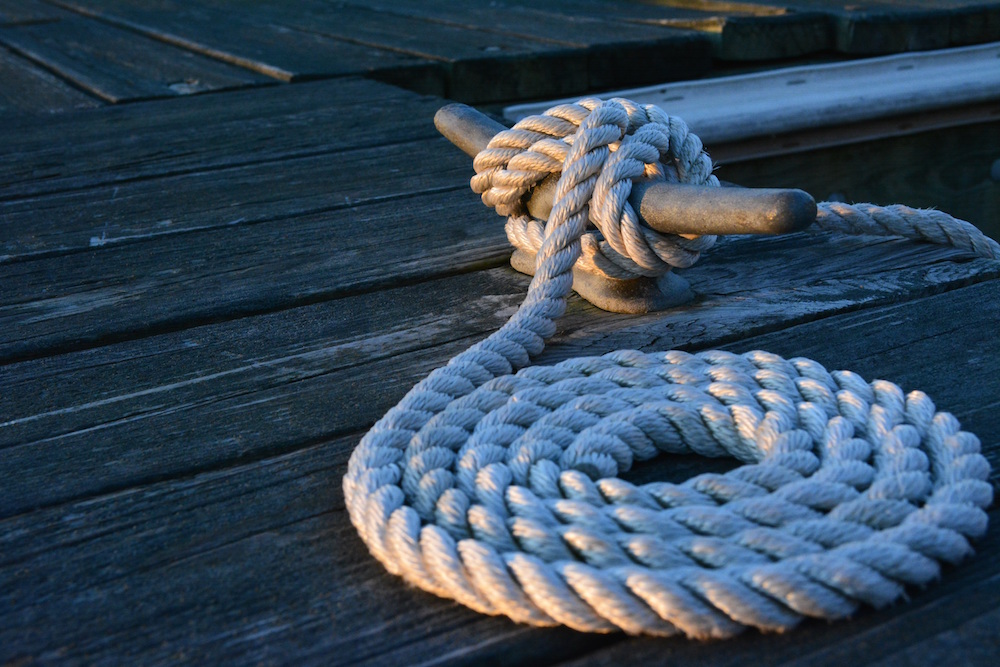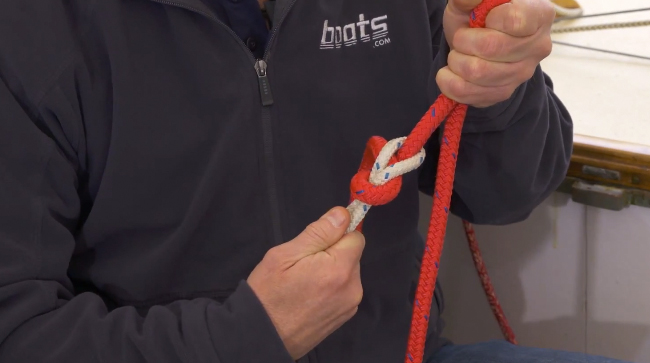Easy Way to Tie Rope to Trailer Hitch
Knot Tying Basics: Tips from Sea Tow
Tying knots is essential knowledge for any savvy boater. Sea Tow suggests mastering these five basic knots while out at sea.
There are literally thousands of different knots that have been invented over the ages, and there are encyclopedic reference works that show how to tie and use these knots. Most of these knots are for special purposes and some are truly esoteric, but the fact of the matter is that five basic knots will serve the needs of most boaters quite well. Avid knot-tying readers can always make a case for other knots (the fisherman's bend and rolling hitch come to mind), but the basic knots shown here are adaptable enough that you'll always look like a pro if you learn these five. The experts at Sea Tow promote the use of these five knots because they can be used for most purposes around a boat and on the waterfront.
The 5 Basic Knots
- The square knot
- The bowline
- The clove hitch
- The double half-hitch
- The sheetbend

It's important for all boaters to understand and master these five basic knots while out at sea.
Terminology First
Rope is what is delivered to your marine hardware store but, once on your boat, it's called line. The very end of a piece of line is called the "bitter end," which is where the phrase "hanging on till the bitter end" was created. The main portion of a line is the "standing part." A "bight" is a U-shaped section of the standing part, and a "loop" is a circle in the standing part.
Another point to remember is that, no matter how good the knot, it is going to weaken the strength of a piece of line because of the abrupt turns in the line that literally kink the fibers. For example, when two pieces of line with a breaking strength of 1000 pounds are knotted together, they may only retain a strength of 500 pounds at the knot. So make sure that you have an ample safety margin when using a knot to join two lines.
With the terminology and cautions out of the way, let's look at some knots. And if you'd rather see than read, you'll find most of these in our How to Tie Knots playlist on YouTube.
1. Square Knot
We'll start with the square knot, which is one that most people tie wrong. Certainly the best known of the sailor's knots, it's used to tie two lines of the same diameter together. Basically, it's two overhand knots, but the trick is to "reverse" the direction of the crossing as you tie the second overhand knot. If you remember "right over left" followed by "left over right," you'll never tie a granny knot, which comes undone easily.
A square knot is about 50 percent weaker than the line strength, so don't risk your life on this knot. It's also not a good knot for joining lines of unequal size together. On the positive side, a square knot is easy to tie (once you've practiced enough so your fingers do it by habit) and it's easy to untie even when wet.

The bowline is one of 5 basic knots all boaters should master.
2. Bowline
This is the most reliable knot for making a loop, and you'll use it for tying lines to fittings or making loops to go around mooring posts. A bowline is often used to tie the tow line into the eye on a dinghy. Most boaters learn to tie the bowline by remembering that "the rabbit comes up through the hole, around the tree, and back down the hole." A better way is to find an old salt who knows how to "throw" a bowline, which is an almost one-handed way of making the bowline, but it's far easier to show than to explain: Watch How to Tie a Bowline to see the process completed step by step.
The bowline is a good all-around knot since it doesn't jam (even when wet, you can "break the back" of a bowline by bending the knot to loosen it). A bowline is good for about 60 percent of the line strength.

Both the clove hitch and the double half hitch start the same way, though they have different uses.
3. Clove Hitch
This is the best way to attach a dock line to a post on the pier, or to tie a fender to a handrail. There are two ways to tie the clove hitch. The first is to wrap the line around the post, tucking it underneath on the final turn to secure it. The second way is to "throw the hitch" by forming the loops in your hands and then dropping them over the post.
The clove hitch is easy to tie and untie and it tightens itself under a load. But if the standing part of the line doesn't have a steady tension, the clove hitch can loosen or slip. To prevent this, many boaters add an additional hitch, or simply tie an overhand knot around the standing part. A clove hitch leaves about 60 percent of the line strength.
4. Double Half-Hitch
This is a good way to dead-end a line that may or may not have tension on it. Because the two half-hitches will slide down the standing part, you can use this as a slip knot when necessary. Use the double half-hitch to tie up to a mooring ring, or for a myriad of uses around your boat. If you're in a hurry, you can skip the double turn around the object, but you'll also be reducing the security of the knot. The double half-hitch is about 30 percent weaker than the line and, though quicker to tie than a bowline, it's not as safe a loop since it can slip.
The double half-hitch is closely related to the rolling hitch, which is covered in our instructional video How to Tie Hitch Knots.

The sheet bend is the best way to join together two lines of different diameter.
5. Sheetbend
This is the best way to tie lines of different diameters together, and it remains easy to untie even after heavy loading. You'll use the sheetbend to join your dockline to an anchor line to create a towing hawser, or if you need to lengthen the dinghy towline with a different-sized line. When making the sheetbend, always form the bight with the thicker line, and then bend the thinner line around it. If the rope is very smooth or slippery, make a double sheetbend by looping the small line twice around the bight instead of just once. For exact directions, watch How to Tie Bend Knots.
A little evening practice with a length of line can turn you into an accomplished knotmeister in no time. Best of all, you'll know that your boat is always properly secured when you use the right knots.
If you're searching for additional tips to help you while you're out on the water, we've partnered with Sea Tow to bring you expert advice on a number of boating-related topics:
- Water Problems in Boat Fuel
- Top Mistakes that Lead to a Tow
- Hurricane Season is Here: Tips from Sea Tow
- Smoothing the Waters: Safe Boating Tips from the Sea Tow Foundation
Editor's Note : Promotional consideration for this article was paid by Sea Tow.
Source: https://www.boats.com/how-to/5-basic-boating-knots-sea-tow/
0 Response to "Easy Way to Tie Rope to Trailer Hitch"
Postar um comentário